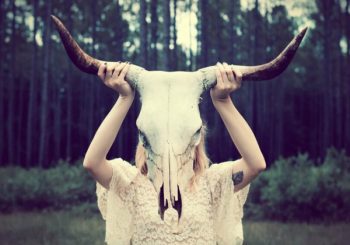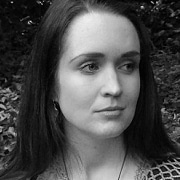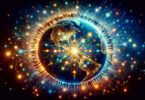Guest writer for Wake Up World
I’ve always been something of an outsider, a lone wolf sniffing out my own path led by the light of my own inner moon, trying to find a home, trying to find truth.
Modern spirituality is a place I thought I would find it.
But even in this domain, I haven’t found a solid place to lay my head.
[pro_ad_display_adzone id=”110028″]
The truth is:
I’m profoundly dissatisfied with 90% of spirituality out there.
All this talk of spiritual ascension, enlightenment, self-realization, and “vibrating higher” somehow feels lacking, incomplete.
All this focus on other dimensions, planes of existence, astral beings, and nirvanic bliss feels like avoidance, escapism – running away from what is here right now.
Instead of being something that helps us to experience integration, balance, and wholeness, modern spirituality seems to be tremendously lopsided – it has become a place to numb, bypass or gloss over issues rather than face them. Whereas religion was once the opiate for the masses, now spirituality is.
Of course, there’s nothing wrong with using spirituality as a kind of happy-drug, feel-good hobby or source of hope. This is normal and (often) healthy. Not everyone is able to confront reality, and that is okay. We’re all at different stages of growth.
However, the major issue arises when the overarching goal of modern spirituality is to bypass our humanity – to focus only on the “love and light” without getting down and dirty, without doing the real inner work.
Spiritual Bypassing and the Rejection of Our Humanity

The denial and avoidance of our humanity occur within nearly every spiritual path – neo-Vedanta, the New Age, Buddhism, esotericism, occultism, Hinduism, Taoism, eastern and western mysticism, even yogic and shamanic paths.
Everywhere I look it seems that there is a shunning, rejection, bypassing or avoidance of our humanity.
Be more “positive” they say. “Good vibes only.” “Manifest more abundance.” “Vibrate higher.” “Focus only on happy thoughts.”
I’m sick of it.
I’m sick and tired of avoiding the raw and real.
I’m sick of trying to stick myself into the “spiritual person” box in which everything is love and bliss and nothing hurts.
I’m sick of the faux spirituality which tells us how to talk, dress, think, feel, and act.
I’m sick of the pressure to be “perfect” and having “transcended” all my shit in order to fit in with those who are on the same “high vibrational level.”
I’m sick of oppressive spiritual labels and ideals which create shame and insecurity.
I’m sick of the judgment and rejection of those who dare to be vulnerable and honest about their emotions or weaknesses.
I’m sick of the spiritual ego which thinks it’s “better” or “more evolved” than others.
I’m sick of the toxic teachings which reinforce dissociation and the repression of trauma.
I’m sick of the philosophies which condemn the aliveness and passion of the body and senses.
I’m sick of all the fake bullshit that masquerades as “spiritual,” “non-dual,” “high vibe,” “awakened,” “ascended,” and “enlightened.”
I’m sick of spirituality that embraces the sacred but rejects the wild within us.
And I’m not innocent – I’m guilty. I’m imperfect. I’m flawed. I’ve had a lot to learn since the beginning of my spiritual path. I’ve believed and adopted inauthentic beliefs and roles. But that’s okay.
It’s okay to be imperfect.
It’s okay to keep learning.
It’s okay to keep stumbling and falling.
It’s okay to be a mess.
It’s okay to feel scared.
It’s okay to feel lost.
It’s okay to be both human AND divine.
You Are a Holy Paradox

It is hard for us as humans to dwell in ambiguity, in nuance, in the in-between spaces.
Our minds are wired to see the world in black or white, good or bad, this or that. We struggle to understand that we can be BOTH one thing AND another. We struggle to perceive the entirety of our being.
The tragedy of being incapable of dwelling in the in-between spaces – the dusk and dawn of existence – is that we fail to grasp the idea that we are a holy paradox.
In other words:
We are both broken and whole.
We are both perfect and imperfect.
We are both light and dark.
We are both mortal and immortal.
We are both human and divine.
One of my favorite ever poems which perfectly encapsulates this reality is a Gnostic manuscript called “The Thunder, Perfect Mind.” It goes like this:
For I am the first and the last.
I am the honored one and the scorned one.
I am the whore and the holy one.
I am the wife and the virgin.
I am the mother and the daughter.
For I am knowledge and ignorance.
I am shame and boldness.
I am shameless; I am ashamed.
I am strength and I am fear.
I am war and peace.
Give heed to me.
I am the one whom they call Life, and you have called Death.
I am the one whom they call Law, and you have called Lawlessness.
I am the one whom you have pursued, and I am the one whom you have seized.
I am the one whom you have scattered, and you have gathered me together.
The fact that we are a holy paradox is not some kind of dogma – it is a reality that you can experience any time you meditate, introspect, reflect, or practice any kind of deep spiritual inquiry or practice.
“But this is all an illusion” many people say. “There is no ‘one’ here doing anything” say other Vedantic traditions. Certainly, on an objective level, the ego is an illusion. Go and practice deep meditation and you will discover that. But if everything is an illusion, why don’t you go stand in front of a truck and test that theory out? After all, the truck is an illusion, right? (Yep, didn’t think so.) As the great Indian philosopher and yogi, Sri Aurobindo once wrote, “The impersonal is a truth, the personal too is a truth; they are the same truth seen from two sides.”
The reality is that we live in a 3D consensus reality. We are both human and divine. We are made of flesh, bones, and blood – but we are also divine, limitless, and eternal. The problem is that people prefer to worship divinity and shun the humanity. This leads to the denial of our wholeness and the avoidance of dealing with our wounds, shadows, and baggage.
Inevitably, spiritual concepts and words can – and will – be twisted and used by us as ways to escape or avoid reality. In fact, spiritual ideas and truths are almost guaranteed to be used as methods of bypassing the hard work that we need to do. It’s very easy to become intoxicated with promises of love, light, and eternal peace – while avoiding the reality that you have to do the deep inner work to evolve to such a level.
The Power of Down-to-Earth Spirituality

What if enlightenment were less about fireworks and eternal bliss and more about dissipating the illusions we have about what life itself is? About becoming more authentic, compassionate, and real — and stopping our pretending? About letting the protective layers of our personality structure crumble? About becoming progressively more effective agents of transformation and of the alleviation of suffering the world, beginning with ourselves? … I have come to believe that although different paths have different goals, an authentic and integrated spiritual path should make us more real and human, not less.
– M. Caplan
It might not be as popular as tripping out on rainbows, communicating with angels, or traveling to other dimensions, but down-to-earth spirituality is needed by humanity more than ever before.
Without grounding spirituality within the human experience, it becomes a dissociated and disconnected fluffy cloud into which we escape from daily life. Instead of solving our problems, it causes us to repress, deny or disown them.
But burying our issues doesn’t solve them. Avoiding our messy humanity doesn’t excuse us from human foibles and flaws. Focusing only on “ascending” won’t help us to face our shadows.
We need to both ascend and descend. Only once we descend into the mysterious realms of our psyches and journey through that dark forest can we ascend.
To me, the deepest form of spirituality is one that seeks integration, balance, and wholeness. As psychologist Carl Jung once wrote,
Wholeness is not achieved by cutting off a portion of one’s being, but by integration of the contraries.
Down-to-earth spirituality is about integrating ALL aspects of our nature – the good and bad, the nice and nasty, the beautiful and ugly, the sacred and wild combined. It is about cultivating and exploring all sides of our nature: our logic and intuition, our mind and soul, our heart and body.
Down-to-earth spirituality, in the words of integral philosopher Ken Wilber, is about waking up and growing up. In other words, it’s about becoming fully human and taking self-responsibility for our lives as well as learning how to transcend the limited ego self.
True inner peace, wholeness, and love come when we are able to sit with the entirety of our nature, understand it, accept it, and embrace it.
True spirituality, in my perspective, is being able to sit in that twilight space of paradox: of embodying the sacred and embracing the wild within us.
How to Embrace the Sacred and Wild Within You

To honor both the sacredness and wildness within you is like giving yourself the deepest and most loving embrace you could ever receive.
You are no longer denying, rejecting or disowning any part of your nature.
You are no longer putting on spiritual pretenses or carrying exhausting ideals.
You are no longer shaming or rejecting your imperfect humanity in favor of a polished spiritual facade.
You are no longer trying to be something or someone you’re not.
Instead, you are striving to embrace ALL that you are – nothing excluded, rejected or disowned. This is the essence of authenticity.
To embrace the sacred and wild within you requires integrating spiritual practice with psychological growth and healing. You must seek to explore your core beliefs, unconscious mindsets, toxic habits, defense mechanisms, shadows, and unhealed wounds – everything hidden within the contents of your mind – and seek to bring clarity, balance, and healing. Parallel to this psychological growth and maturing comes spiritual growth and maturing. Spiritual practice entails anything that helps you to transcend the ego and experience your eternal nature. Examples could include mindfulness, meditation, shamanic journeying, yoga, and nature immersion.
Here again, there is a paradox – we must seek to both mature and dismantle the ego. Maturing the ego (as in developing a clear and healthy sense of self) is needed in order to prevent unhealed wounds, neurosis, and shadows from rearing their heads and taking over our lives. In the words of John Bradshaw, “Paradoxical as it may seem, your ego needs to be strong enough to let go of its limited defensiveness and control. You need a strong ego to transcend ego.”
Failing to psychologically mature alongside spiritual growth can be tremendously limiting and dangerous. For example, the vast majority of scandals out there involving spiritual teachers (think Zen Buddhist leader Eido Tai Shimano, Buddhist teacher Sogyal Rinpoche, Yoga leader Bikram Choudhury, American spiritual teacher Andrew Cohen, etc.) who used their students for money, sex or power were due to an imbalance in psychological development. As yoga teacher and psychologist Mariana Caplan writes,
We cannot assume that simply because we have had profound experiences of spiritual illumination or enduring insights, all aspects of our psychology have been touched by our awareness … Rarely does heightened awareness take the place of the necessary and humbling task of learning to feel and digest our own psychological pain, or of the gritty challenges of dealing with human relationship, self-hatred, shame, sexuality, and intimacy with others. Spiritual insight can, but often does not, penetrate psychological conditioning.
We need to strive for balance. In order to practice embodied and down-to-earth spirituality, we must psychologically and spiritually mature. Exploration of our body, mind, heart, and soul – the unification of all parts of our nature – is imperative.
But how can we psychologically and spiritually mature?
Here is a simple map that Mateo and I have developed and crystallized over the course of many years. These steps also form our core principles – or that which is at the center of everything we strive to do here and in our lives:
1. Walk your own path
Embrace being different. Honor your inner wolf. Permit yourself to be an outsider. Go the path less traveled. Find your meaning in life. Challenge the status quo. Dare to be unorthodox. Celebrate non-conformity.
1.1 Be true to yourself
Practice radical authenticity. Don’t try to be someone you’re not. Do what feels true and honest to you. Defend your integrity. Listen to your calling.
1.2 Be a rebel
Question everything. Be a free spirit. Rebel against the norm. Embrace your inner misfit. Celebrate your wild and untamable Self. Don’t accept anything unless it makes sense. Ask, “Is this true?”
1.3 Be passionate and sincere
Practice deep sincerity. Be fervent about the pursuit of truth, depth, and understanding. Be open, receptive, and humble. Be genuine and serious about the spiritual path. Be wholehearted (not lukewarm).
2. Fiercely seek truth
See through the veil of deception. Expose falsehood and hypocrisy both within yourself and others compassionately. Illuminate the darkness. Explore what is reality versus illusion. Be discerning and clear-minded. Ask, “How am I/others being dishonest?”
3. Know and accept yourself
Strive to be self-aware and understand who you are at your core. Explore your strengths and weaknesses. Investigate your body, mind, heart, and soul. Practice inner work. Ask “Who am I?” Love yourself. Be attentive to all of your needs. Become your own best friend. Practice self-compassion and self-acceptance. Trust and honor yourself. Learn to love all the beautiful and ugly parts of yourself unconditionally. [Read more about self-awareness and how to love yourself]
4. Find balance
Permit yourself to be both human and divine. Practice embodied and down-to-earth spirituality. Integrate spiritual practice with psychological growth and healing. Strive to wake up and grow up. Use logic and intuition. Ground spirituality in daily life. Seek to unify all parts of your nature.
5. Reconnect with your Soul
Dive deep. Go within. Practice inner work. Remove the blockages obscuring your Soul. Listen to the small, still voice inside. Seek integration, balance, and Wholeness. Honor your wild nature and eternal Soul. Proudly embody your True Nature.
That’s it.
I’m not claiming this is the path. There are many paths up the hill. This map is simply what I have found to be true, what I respect and stand for. And the process isn’t linear either. The path through that dark forest is often a spiral: when you reach the end, you have only just found the beginning and vice versa.
To give you a place to start I’ll pose a few questions. You are free to record your answers in a journal or ruminate over them in your own time:
- What wild part of me am I rejecting?
- What do I value the most about my humanity?
- What does authenticity mean to me?
- When I picture wholeness, what does it look, sound, or feel like?
- How can I spiritually mature?
- What path does my soul feel called towards?
- What shadows are lurking within me?
- In what ways am I disowning my light?
Answering these questions will likely give you some illuminating responses and reveal your own inner truths which you can begin to work with.
Learn more about how to journal.
Love All That You Are

Honoring both your humanity and divinity comes back to love.
To love and embrace all that you are is your birthright.
When most people think of love they picture the warm-and-fuzzy kind. But love is so much more than that. Love is also ruthless self-honesty and authenticity.
Love is being able to sit in the storms of your ugliness and burning shame and say to yourself, “it’s okay, I understand, I forgive you.”
Love is being able to gently cradle yourself through your darkest night of the soul and deepest pits of despair.
Love is being able to pick yourself up out of the filth and grit of daily life and still see your divine worth.
Love is being able to cut through the shit and live your own truth.
Love is believing that you are lovable and worthy, despite how others treat you.
Love is reclaiming the power you have projected and taking responsibility for your life.
Love is all these things, and so much more.
So, dear sacred wild one, may you give yourself permission to be both human and divine. May you honor your wild nature and eternal soul.
May you embrace the wild wolf within.
May you come to truly experience – and embody – fierce and unconditional love.
Lots of love.
x
Recommended articles by Aletheia Luna:
- How to Create Your Own Full Moon Ritual (With 5 Suggestions)
- Anima and Animus: How to Harmonize Your Masculine and Feminine Energies
- The Sensitive Person’s Guide to Emotional Regulation (in 10 Minutes or Less)
- 25 Signs You Have a Wounded Inner Child
- Feeling Empty: 5 Ways to Heal Your Inner Void
- The Ultimate Guide to Heart Chakra Healing for Beginners
- The Dark Side of Spiritual Healing That No One Talks About
- The Origins of the Spirit Animal, Totem and Power Animal
- 9 Ways to Awaken the Divine Masculine Within You
- How to Channel Your Soul Through Automatic Writing
About the author:
Aletheia Luna is an influential spiritual writer whose work has changed the lives of thousands of people worldwide. After escaping the religious sect she was raised in, Luna experienced a profound existential crisis that led to her spiritual awakening. As a psychospiritual counselor, tarot reader, and professional writer, Luna’s mission is to help others become conscious of their entrapment and find joy, empowerment, and liberation in any circumstance. See more of her work at lonerwolf.com.
This article, Dear Human: It’s Okay to be Both Sacred AND Wild, was originally published on lonerwolf.com, reproduced with permission.
[pro_ad_display_adzone id=”110027″]








